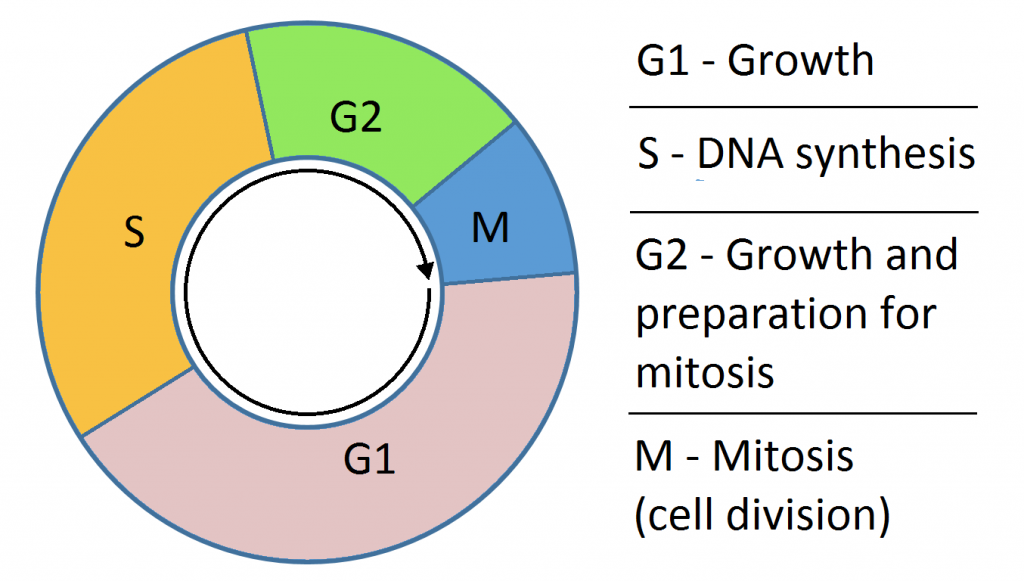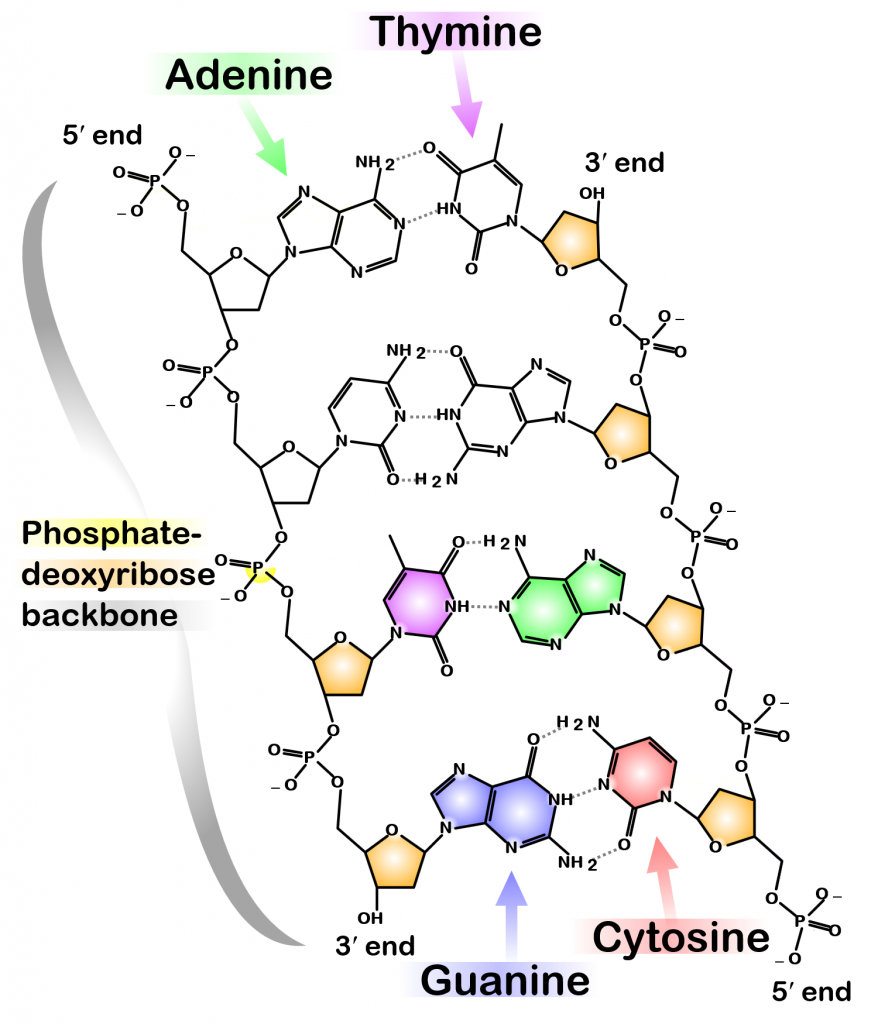Contents
Nucleic Acids
DNA Replication
In order for new cells to be created, all the DNA in a cell must be replicated first to ensure that each new cell contains the full amount of DNA when the cell splits in half. This occurs in the S-phase of interphase in the cell cycle.
When describing the DNA double helix, the top and bottom of each strand are described as either the 3’ (prime) end or the 5’ (prime) end. This number refers to which carbon within the deoxyribose sugar of the nucleotide is closest to the top/bottom, as shown in the diagram below. This is relevant because an enzyme that catalyzes DNA replication is complementary in shape to the 3’ end and can therefore only attach to the DNA at this location.
Stages of DNA Replication
Before the DNA can be copied, the double helix must first unwind. The enzyme DNA helicase breaks the hydrogen bonds between the complementary bases of the two DNA polymers within the double helix. This causes the double helix to unwind, and the two strands to separate or unzip. These two separated strands both act as templates for DNA replication.
The point at which the unzipping stops is called the replication fork. Not all the DNA is unzipped in one go, as this increases the chances of copying errors resulting in mutations.
Within the nucleus, there are free-floating DNA nucleotides. If a free-floating DNA nucleotide aligns next to a complementary base on either template strand of DNA, then hydrogen bonds will form between them.
The enzyme DNA polymerase is responsible for forming the phosphodiester bond between these nucleotides to create a new polymer chain of DNA. DNA polymerase can only attach at the 3’ end and therefore will move along the template strand in the 3’ to 5’ direction.
When the enzyme is moving towards the replication fork, the new strand is referred to as the ‘leading strand’ and can be created in one continuous go. On the antiparallel strand, the DNA polymerase still attaches at the 3’ end and works down towards the 5’ end, but this is directly next to the replication fork.
Therefore, every time the replication fork unwinds further, the enzyme has to reattach to the 3’ end, and this creates small fragments of DNA. This strand is called the ‘lagging strand,’ and the small fragments are called Okazaki fragments. The Okazaki fragments are later joined together by the enzyme DNA ligase.
Both DNA template strands are now replicated, and this process continues until the entire length of DNA is replicated.
Semi-Conservative Replication
DNA replication is described as semi-conservative because in replication, one strand is conserved, and one new strand is created.
Meselson and Stahl performed the experiment below to prove this.
Bacteria were grown in a solution containing the 15N isotope, a heavier form of nitrogen. During replication, all the new DNA molecules incorporated will contain this isotope in the nitrogenous base. The DNA is therefore heavier, and this is demonstrated by centrifuging and seeing the DNA band settling at a lower point in the test-tube.
A sample of this bacteria is then transferred to a solution containing only the 14N lighter isotope of nitrogen and left to replicate once only. All the newly synthesized DNA will now be lighter. After centrifugation, all the DNA settles in the middle of the test-tube, which shows that in DNA replication, 50% of the old DNA is always conserved, and 50% of the DNA is new.
The bacteria are left to replicate for a second time in the light 14N medium. After another round of semi-conservative replication, the results can be seen above. There will now be two double helices composed of completely light DNA and two double helices that contain one heavy strand and one light strand.
- If the bases on a section of the template DNA strand were TACGGCAAA, what would the bases on the newly formed strand be?
- ATGCCGTTT
- In Meselson and Stahl’s experiment, which part of the DNA nucleotide contains the nitrogen?
- Nitrogenous/base
- Name the enzymes that unwind and unzip the double helix:
- Helicase
- Name the enzyme that polymerizes the new DNA strand:
- DNA/Polymerase
- Name the enzyme that joins the Okazaki fragments together:
- DNA/Ligase
- On which strand are the Okazaki fragments located?
- Lagging/strand
- Does DNA polymerase attach to the 3’ or the 5’ end on the template strand?
- 3





